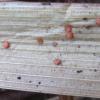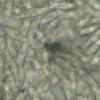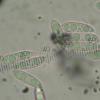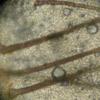
09-03-2014 12:32
Hola a todos!Os presento este posible anamorfo sob

14-03-2014 22:40
¡Hola a todos!Apotecios intradérmicos foliares,

14-03-2014 15:34
Patrice TANCHAUDBonjour,récolte réalisée à l'interieur d'une �

14-03-2014 14:40
Hi to all I'd like to know your opinion about thi

13-03-2014 12:27
 Björn Wergen
Björn Wergen
Hi there,does anybody have the article from Shoema

12-03-2014 11:46
 Michel Hairaud
Michel Hairaud
Bonjour à tous, Hi to all, Je sollicite votre ai

12-03-2014 17:04
 Hermine Lotz-Winter
Hermine Lotz-Winter
Hello,could anyone help me with this title:Rodrigu

12-03-2014 20:37
 Maren Kamke
Maren Kamke
Hi everybody,I got this find from a friend. Apothe

12-03-2014 20:26
Pavol PaloHello friends,may I ask you for help ? I would nee
Anamorfo en Iris pseudacorus
Javier Ormad,
09-03-2014 12:32
Os presento este posible anamorfo sobre hojas de Iris pseudacorus.
Esporas largamente elípticas, ligeramente irregulares, con cuerno en extremo esporal, lisas, hialinas, con 2-3 vacuolas de gran tamaño y algunas con pequeñas gútulas accesorias, de 10-16 x 3,5-4 micras. Pelos marrones, gruesos, de doble pared, multiseptados y pálidos en ápice, de base engrosada, de hasta 450 x 8 micras.
Dadas las escasas lluvias por esta zona, este especimen lo había desechado otras veces.....
Gracias por las opiniones
Javier
Hello everyone!
I present this possible anamorph on leaves of Iris pseudacorus.
Long-elliptic, slightly irregular spores with spore horn end, smooth, hyaline, with 2-3 large vacuoles and some with small accessory gútulas, 10-16 x 3.5-4 microns. Brown, thick hair, double-walled, pale in multiseptados apex, base thickened, up to 450 x 8 microns.
Given the low rainfall in this area, this specimen had rejected other times .....
Thanks for the opinions
Javier
Chris Yeates,
09-03-2014 15:18

Re : Anamorfo en Iris pseudacorus
Hola Javier
this looks very close to Volutella melaloma, generally found on dead leaves of Carex spp., but also on other monocot's - Poaceae, Juncus and Typha (so why not Iris?)
un cordial saludo
Chris
PS - see this thread: http://www.ascofrance.com/search_forum/706
this looks very close to Volutella melaloma, generally found on dead leaves of Carex spp., but also on other monocot's - Poaceae, Juncus and Typha (so why not Iris?)
un cordial saludo
Chris
PS - see this thread: http://www.ascofrance.com/search_forum/706
Javier Ormad,
09-03-2014 18:19
Re : Anamorfo en Iris pseudacorus
Thanks Chris
It is a good choice Volutella melaloma. Well I think it is correct, after own indications.
Very best regards
Javier
It is a good choice Volutella melaloma. Well I think it is correct, after own indications.
Very best regards
Javier
Javier Ormad,
15-03-2014 16:23
Re : Anamorfo en Carex pendula
Thanks to friend Luc Bailly, the host is Carex pendula instead of Iris pseudacorus
Best regards
Javier
Best regards
Javier



